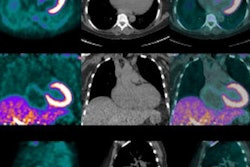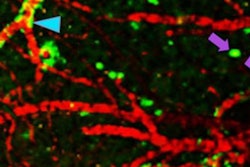"Obese patients have, in general, increased cardiovascular risk," Dr. Andrea Lorenzo, from the Clínica de Diagnóstico por Imagem in Rio de Janeiro, told AuntMinnie.com. "Further stratification of cardiovascular risk using myocardial perfusion SPECT is useful to guide patient management [and to] possibly increase efforts toward weight loss or optimize the use of medications, depending on the results of the SPECT study."
Lorenzo and colleagues reviewed more than 5,500 patients (27% were obese) who underwent a same-day rest and stress protocol, with injection of 222 MBq to 370 MBq of technetium-99m (Tc-99m) sestamibi at rest and 666 MBq to 1,110 MBq during stress. SPECT was performed with a dual-head camera (Ventri, GE Healthcare) or a cadmium zinc telluride-based (CZT) SPECT system (Discovery 530, GE).
The group then performed semiquantitative 17-segment visual interpretations of the gated myocardial perfusion images using a standard five-point scoring system. The patients' stress and rest scores were calculated, and the differences between the two results were calculated as a summed difference score (SDS).
The prevalence of ischemia did not differ significantly between obese (11%) and nonobese (9%) patients with none or one cardiovascular risk factor. However, the prevalence was greater for obese patients (22%) with a body mass index of at least 40 kg/m2, compared with nonobese patients (10%) under that mark. Obese patients with hypertension, diabetes, or dyslipidemia (16%) also had higher rates of myocardial ischemia than nonobese people (10%) without those risk factors.
As for the performance of SPECT, the researchers rated image quality as good to excellent in 94% of the obese patients.
"Myocardial perfusion SPECT informs the physician about the presence and severity of myocardial ischemia, which has several implications: increased risk of adverse cardiovascular events such as myocardial infarction, the need of further invasive testing, and the need of more intensive medical treatment," Lorenzo concluded.



















